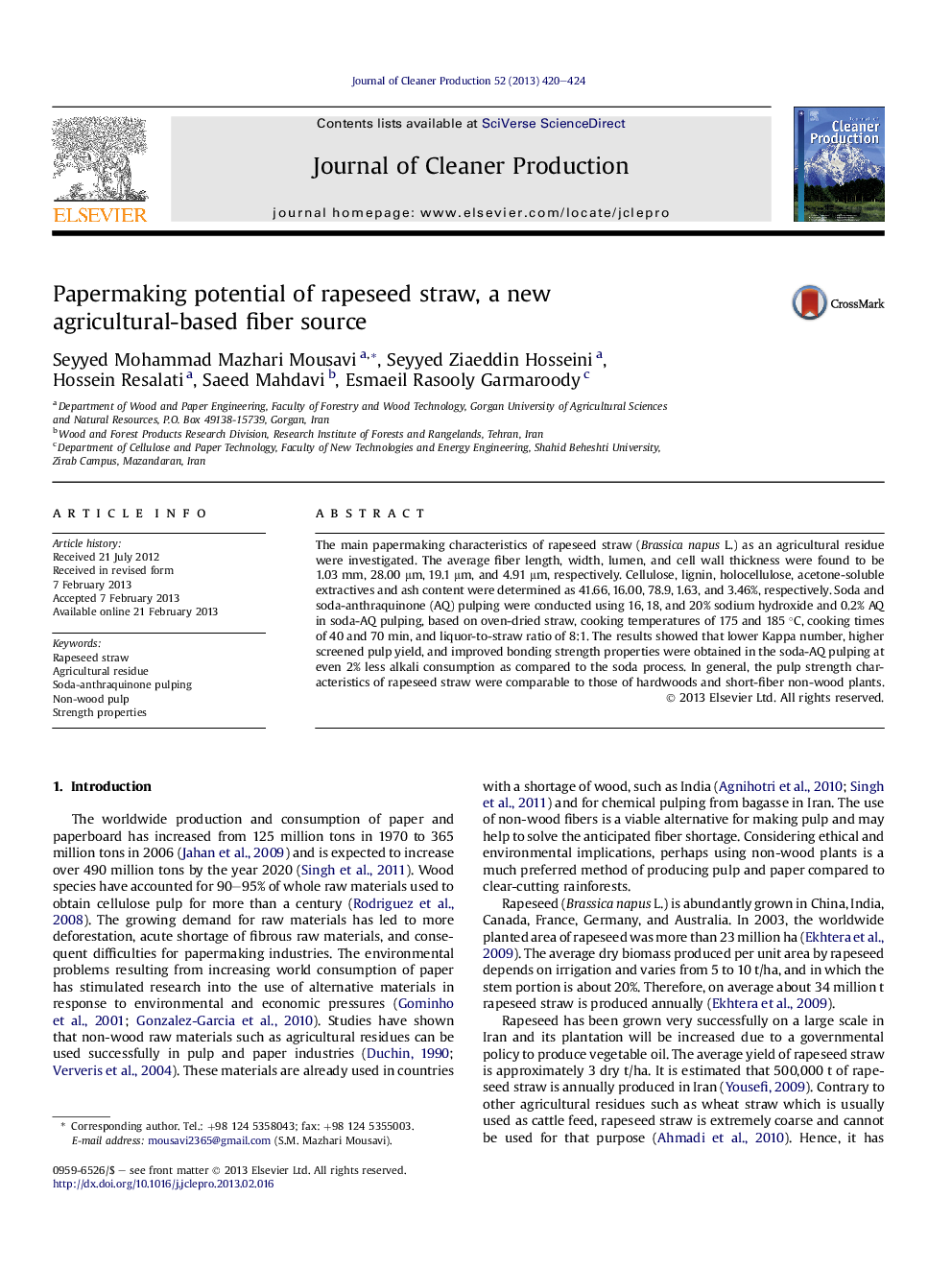| Article ID | Journal | Published Year | Pages | File Type |
|---|---|---|---|---|
| 1745261 | Journal of Cleaner Production | 2013 | 5 Pages |
The main papermaking characteristics of rapeseed straw (Brassica napus L.) as an agricultural residue were investigated. The average fiber length, width, lumen, and cell wall thickness were found to be 1.03 mm, 28.00 μm, 19.1 μm, and 4.91 μm, respectively. Cellulose, lignin, holocellulose, acetone-soluble extractives and ash content were determined as 41.66, 16.00, 78.9, 1.63, and 3.46%, respectively. Soda and soda-anthraquinone (AQ) pulping were conducted using 16, 18, and 20% sodium hydroxide and 0.2% AQ in soda-AQ pulping, based on oven-dried straw, cooking temperatures of 175 and 185 °C, cooking times of 40 and 70 min, and liquor-to-straw ratio of 8:1. The results showed that lower Kappa number, higher screened pulp yield, and improved bonding strength properties were obtained in the soda-AQ pulping at even 2% less alkali consumption as compared to the soda process. In general, the pulp strength characteristics of rapeseed straw were comparable to those of hardwoods and short-fiber non-wood plants.
► Rapeseed straw was used as a bio-waste resource to obtain cellulosic pulp. ► In the soda pulping process, the screened pulp yield was low and Kappa number was high. ► The addition of anthraquinone (AQ) increased the rate of delignification and screened pulp yield. ► The soda-AQ pulping saved alkali concentration by 2% on O.D. straw to reach a better level of bonding strength properties. ► The pulp strength properties of rapeseed straw were comparable to that of common non-wood plants and hardwoods.
